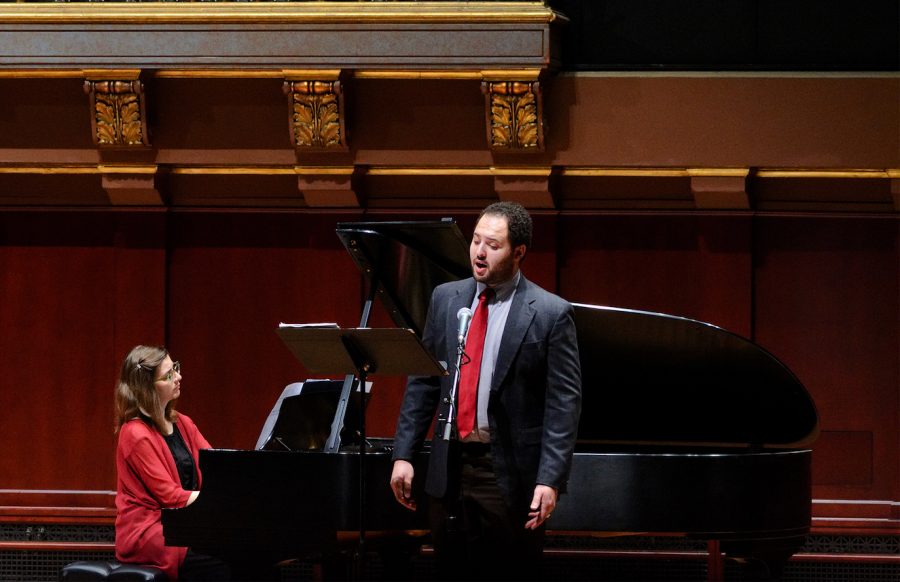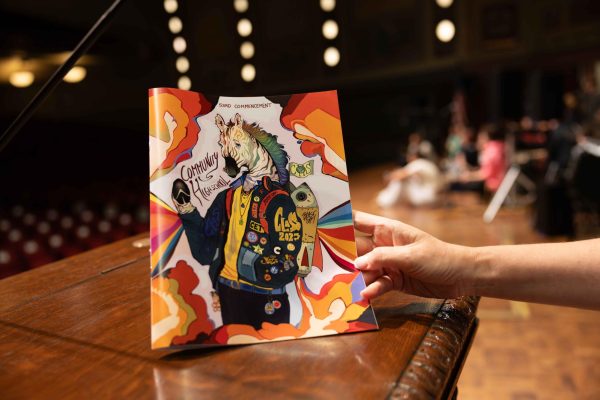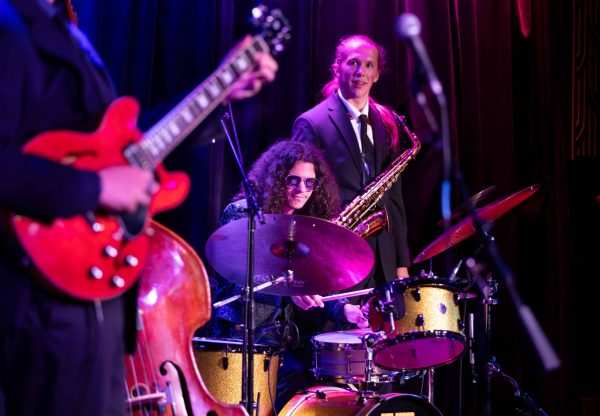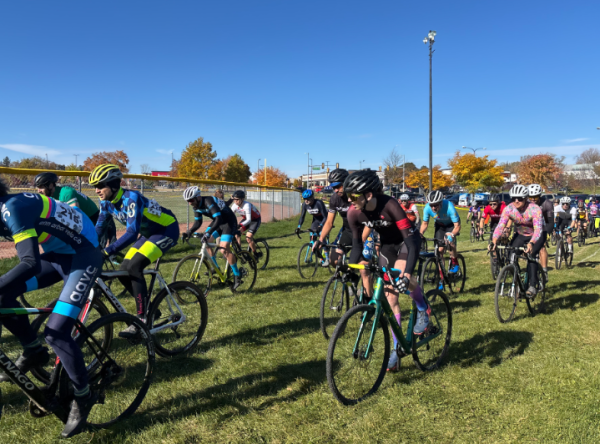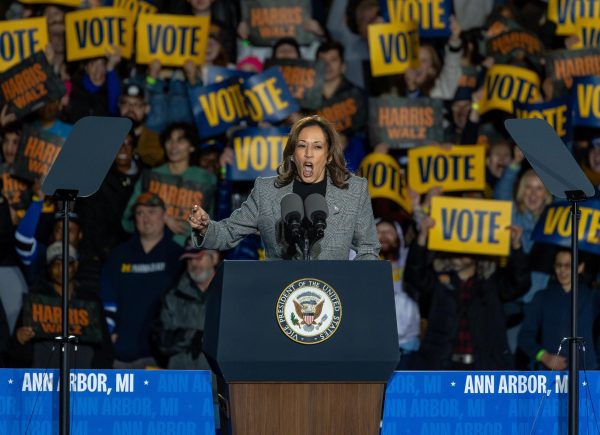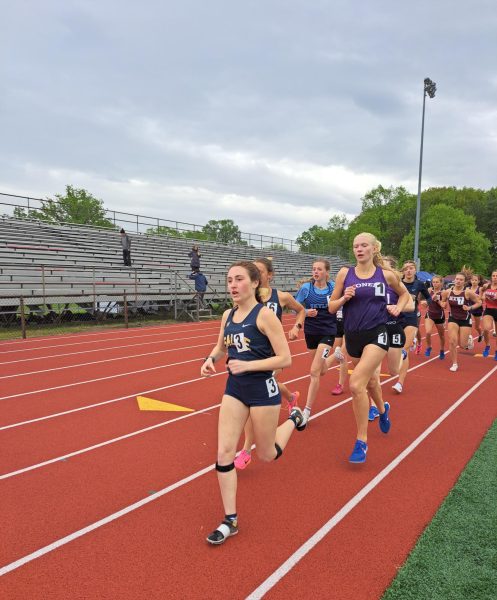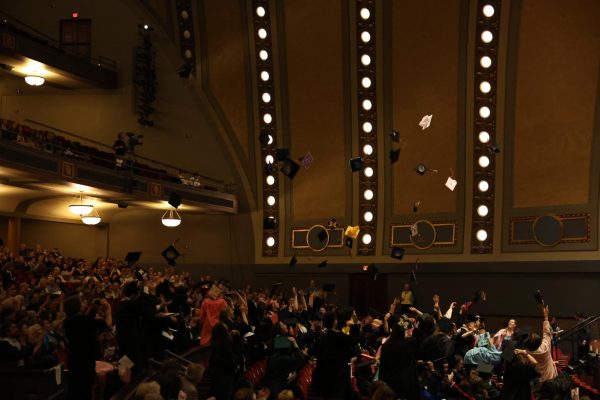MLK Symposium 2017
Elderly, youth and people of all ethnicities gather together to celebrate and honor the life of Dr. Martin Luther King Jr.
On a chilly January morning, a line of hundreds of people wrapped its’ way around Hill Auditorium. People stood close together, a feeling of anticipation in the air as the line slowly crawled towards the entrance. Suddenly, with a surge the doors were pushed all the way open and a group of college students stampeded its’ way through the enormous doors. The crowd was diverse. Elderly, youth and people of all ethnicities slowly filing their way into the auditorium, all gathered together for the common reason of celebrating and honoring the life of Martin Luther King Jr
Featuring an interview with Issa Rae prefaced by Amy Goodman, this year’s MLK Symposium drew hundreds of eager listeners, with even more watching the event through an online live stream. On the very same stage, Martin Luther King Jr. stood more than 50 years ago on Nov. 5, 1962. Now, an event in honor of his life and work was well underway. The main floor of the auditorium almost completely filled within minutes of the doors opening.
To introduce the event, Mark Schlissel, University of Michigan President spoke and encouraged the audience to “use this occasion to both celebrate and learn from those who came before us.” Schlissel said. “ We can celebrate and learn from the student activists who have demonstrated that we must do better. We must never forget that the fight for justice is ongoing.”
In commencement, an alternative form of the Star Spangled Banner was performed. Sung to the same tune as the original anthem written by Frances Scott Key in 1814– though this variation used strikingly different lyrics. Rather than the original patriotic words, the song ended: “or the deathbed of freedom, the home of the slave,” along with other modifications to the song.
To Introduce Amy Goodman, Alyssa Brandon, an undergraduate student from the college of Literature, Science and Art stepped onto the the podium. She spoke on her experiences of being a senior news editor for the Michigan Daily and former senior editor for Michigan in Color. “I appreciate Amy Goodman and Issa Rae for sharing stories that are sometimes difficult to express, stories that expose harsh realities but are necessary to build empathy,” Brandon said.
Next, Amy Goodman stepped up to the podium. After recounting the formation of Democracy Now!, the independent new source which she hosts, Goodman made a hard point: “We need to take back the media,” Goodman said, referring to the recent villainization of the media and the concept of ‘fake news’, largely encouraged by the president-elect on his Twitter account. Goodman herself has experienced first hand the challenges of being a journalist in 21st century America. An arrest warrant was issued for Goodman for her work in North Dakota where she worked on and released a video piece documenting the horrific events surrounding the pipeline. With this story, Goodman instilled in the audience the importance of journalism. Goodman went to North Dakota to show people the real story and to publicise the horrific events taking place against Native Americans. She spread the truth across media, the gruesome truth—the truth that needed to be seen. As Goodman flew into Bismarck, ND the prosecutor admitted to having no feasible charges against her, though later he would charge her with similar allegations, threatening up to a year in prison. But that same month, the judge not only decided to drop all charges against Goodman, but also against a number of Native Americans.
After Goodman’s speech, Issa Rae, the first African American to have her own HBO series, sat down with her for an onstage interview. Rae presented her topic, being a Black female director, in a lighthearted and humorous tone. “I wanted to come out to YG’s ‘F Donald Trump,’ but it didn’t seem appropriate,” joked Rae. Joking about her childhood, Rae talked about feelings of displacement whilst attending a primarily White school growing up where she was one of two African American girls. Later, after her family moved back to Los Angeles, Rae attended a predominately Black high school, where she continued to feel displaced. She explained that a lot of her experiences not fitting in has modeled her work today. Rae explained a lot of that work focuses on how to feel more comfortable.
Rae found her passion in writing when majoring in Art at Stanford University, where she created various short projects, including “Dorm Diaries,” a series on what it’s like to be a Black female at Stanford. But Rae’s ground-breaking project, “Awkward Black Girl,” started when she was a broke girl in New York.
Although being a film writer is Rae’s passion, she also talked about the stresses of the job and of having to maintain not only her vision but others as well through her work.
“I’m so excited to have the opportunity to create with people I love and respect and admire,” Rae said. She continues to embrace every opportunity given to her and is forever thankful for the doors her previous projects have opened not only for her, but people around her “I just see it as a ticket to produce with other creators of color,” said Rae.



